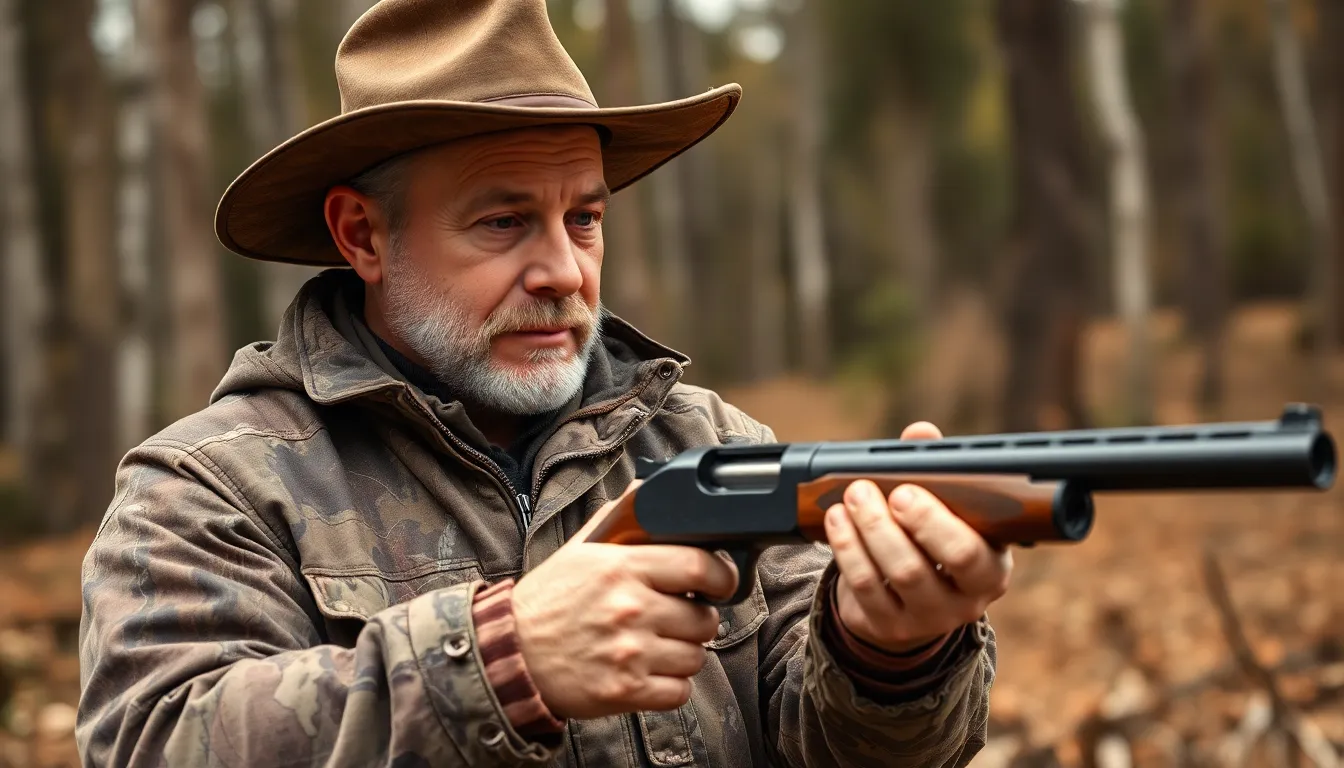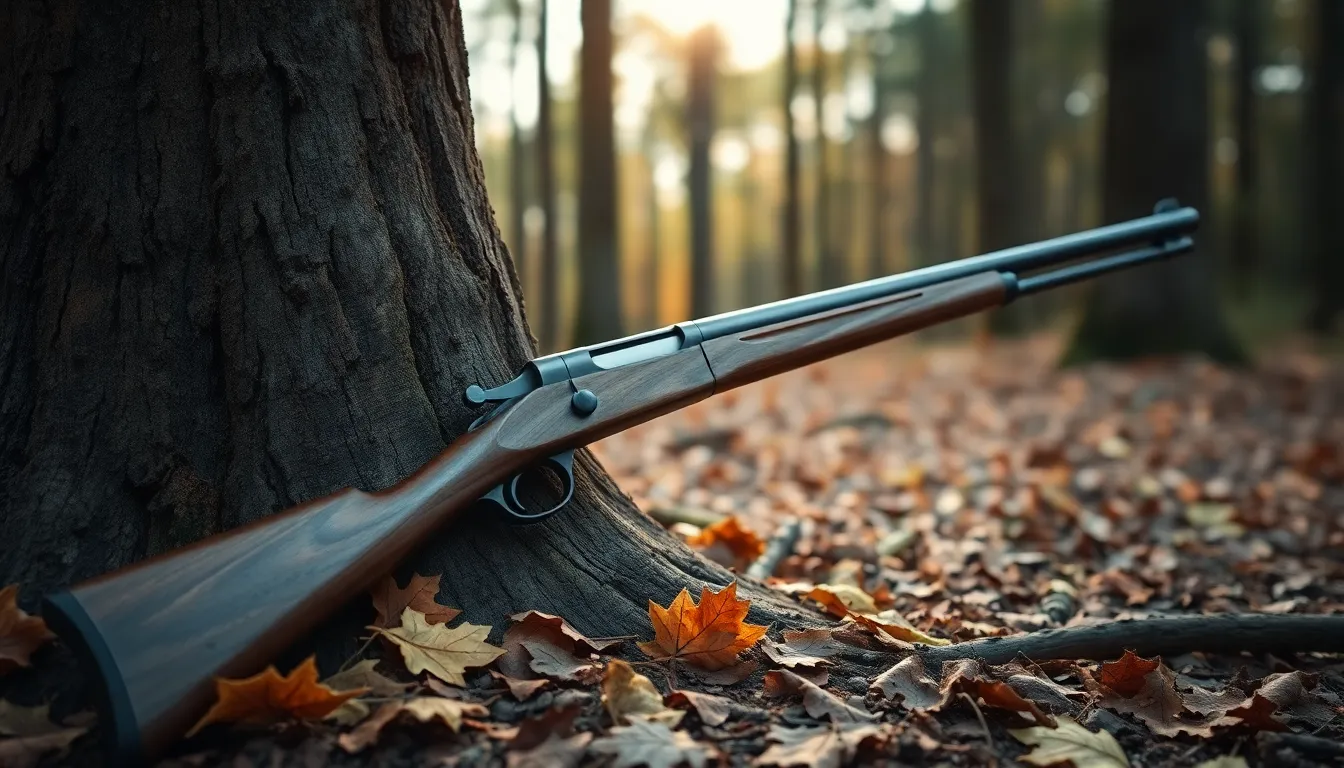Table of Contents
ToggleMuzzleloaders hold a unique place in the world of firearms, captivating both history enthusiasts and modern shooters alike. These traditional weapons, which require loading from the front, offer a glimpse into the past while still being popular for hunting and sport shooting today. As interest in muzzleloading continues to grow, understanding the facts and myths surrounding these firearms becomes essential.
Determining which statements about muzzleloaders are true can be tricky. Misconceptions abound, often leading to confusion among new and experienced users. By exploring the key characteristics and historical significance of muzzleloaders, readers can gain valuable insights that enhance their appreciation and knowledge of this fascinating aspect of firearm history.
Overview of Muzzleloaders
Muzzleloaders are firearms loaded from the front, marking their distinction from modern breech-loading firearms. Historical significance plays a vital role in their appeal, as they connect users to past eras of gunpowder and marksmanship.
Muzzleloaders consist of various types, including rifles, shotguns, and pistols. Each type serves specific purposes like hunting, sport shooting, and reenactments. Their design often includes a rifled barrel, enhancing accuracy by imparting spin to the projectile.
Muzzleloaders utilize black powder or alternative powder types, with their loading process comprising several essential steps. Users insert the projectile and powder into the muzzle, followed by a wadding material, then secure the ignition source, typically a percussion cap or flintlock system. This traditional loading method influences shooting methods and safety protocols.
Muzzleloading events and competitions showcase their enduring popularity. Many local and national competitions highlight marksmanship and historical knowledge. Such events foster a community of enthusiasts dedicated to preserving shooting traditions.
Legislation surrounding muzzleloaders varies by region, impacting their use, hunting seasons, and required permits. Familiarity with local laws is crucial for compliance and ensures responsible ownership. Understanding these regulations supports the responsible enjoyment of muzzleloaders in various contexts.
Common Misconceptions About Muzzleloaders

Several misconceptions about muzzleloaders exist, which can mislead both enthusiasts and newcomers. Understanding these myths clarifies their functionality and relevance in modern shooting sports.
Myth 1: Muzzleloaders Are Obsolete
Muzzleloaders remain relevant. Many shooters appreciate their historical significance and unique handling characteristics. Muzzleloaders are utilized in various hunting seasons where modern firearms may be restricted. They are, therefore, viewed not as outdated but as distinct and valuable tools for hunters and sport shooters.
Myth 2: All Muzzleloaders Are Difficult to Use
Muzzleloaders vary in complexity. While some models might require more skill to operate, many contemporary designs are user-friendly. Basic models often come equipped with features like improved ignition systems and streamlined loading processes, enhancing accessibility for beginners. Users can easily learn to operate even more intricate models with proper instruction and practice.
Understanding Muzzleloader Mechanics
Muzzleloaders exhibit unique mechanics that set them apart from modern firearms. Understanding the key components and their functions clarifies how these traditional firearms operate.
Key Components of a Muzzleloader
- Barrel: The barrel, typically rifled for improved accuracy, houses the projectile during firing. It is often made of steel, providing strength and durability.
- Breech Plug: The breech plug seals the rear of the barrel and contains the ignition mechanism, allowing for pressure buildup during firing.
- Ignition System: This includes percussion caps or flintlock mechanisms, which ignite the powder. The choice affects firing reliability and user preference.
- Stock: The stock provides stability and control for the shooter. Different designs, such as straight or curved, contribute to comfort and handling.
- Trigger: The trigger initiates firing when pulled, often featuring various styles that influence sensitivity and pull weight.
How Muzzleloaders Function
Muzzleloaders operate through a traditional loading process. First, shooters load powder and projectile from the muzzle end. This design necessitates careful adherence to safety protocols and appropriate loading techniques. Next, shooters engage the ignition system, which ignites the powder when the trigger is pulled. As gas expands, it propels the projectile down the barrel, utilizing rifling for spin and accuracy. Understanding this operation allows shooters to enhance their skills and safety during use.
The Benefits of Muzzleloading
Muzzleloaders offer distinct advantages that appeal to enthusiasts and shooters alike. Their unique characteristics enhance both the experience and performance.
Accuracy and Performance
Accuracy in muzzleloading is often superior due to the tight fit between the projectile and the barrel. Shooters achieve consistent results, particularly with rifles designed for precision. The rifling inside the barrel imparts a spin on the projectile, improving stability and trajectory. Muzzleloaders also provide a slower, methodical shooting experience, allowing users to hone their skills. Many modern muzzleloaders incorporate advanced materials and engineering, delivering enhanced performance comparable to modern firearms. Target shooters appreciate the challenge and discipline involved, often leading to greater mastery.
Historical and Recreational Value
Muzzleloaders connect users to historical traditions that span centuries. The use of these firearms in historical reenactments and hunting fosters a deep appreciation for craftsmanship and heritage. Many enthusiasts participate in muzzleloading events and competitions, celebrating shared culture and community. These activities not only promote skill development but also preserve traditional marksmanship methods. Collectors value the craftsmanship and artistry of period-specific models, making muzzleloading a fascinating hobby. This blend of history and recreation attracts individuals seeking both connection and enjoyment within the shooting sports community.
Muzzleloaders hold a unique place in the world of firearms that transcends mere functionality. Their historical significance and the community surrounding them enrich the experience for both enthusiasts and newcomers alike. Understanding the facts about these traditional firearms not only dispels common myths but also enhances appreciation for their craftsmanship and heritage.
As modern shooters explore the benefits of muzzleloading, they discover a rewarding blend of skill, history, and sport. Whether for hunting or competition, muzzleloaders continue to captivate those looking for a deeper connection to the past while enjoying the thrill of shooting. Embracing this tradition can lead to a fulfilling journey in the realm of firearms.





